What is Social Media
Social media are web-based interactive tools that are utilized for social interaction through the internet, for both personal and business conversations using highly accessible and scalable publishing techniques. The phenomena of online social networking first began with ‘blogging’. Individuals have been using blogs for years to communicate with one another and its popularity quickly opened up the dialog to broader audiences through public websites offering information on a broad range of subject matter. The ease of use and free access to popular social media tools such as Twitter, Facebook and MySpace have caused the social media market to explode.
Businesses are finally picking up on the trend, first through LinkedIn and more recently Facebook, which has adapted its software to allow for business use. Social media is inevitably being added to what has been known as ‘industrial media’.
Consumer and Business Social Media
As the use of social media has grown, sub-specialties have begun to develop. Prominent among these are Business-to-Consumer (B2C) and Business-to-Business (B2B). B2B social media has several distinct differences from B2C. Among them:
- Business Professionals Must Lower Their Purchasing Risk
- Business Professionals Must Increase Their Knowledge To Ensure Their Livelihoods
- In Order To Advance Their Careers, Business Professionals Must Grow Their Networks
- To Solve Problems, Business Professionals Must Conduct Research–And Reach Out To Companies And Other Professionals
An example of B2B social media is LinkedIn, which provides businessmen and women an opportunity to network professionally separate from other social media.
One characteristic shared by both social media and traditional industrial media is the capability to reach small or large audiences; for example, either a blog post or a television show may reach zero people or millions of people. The properties that help describe the differences between social media and industrial media depend on the study. Some of these properties are:
- Reach – both industrial and social media technologies provide scale and enable anyone to reach a global audience.
- Accessibility – the means of production for industrial media are typically owned privately or by government; social media tools are generally available to anyone at little or no cost.
- Usability – industrial media production typically requires specialized skills and training. Most social media does not, or in some cases reinvent skills, so anyone can operate the means of production.
- Recency – the time lag between communications produced by industrial media can be long (days, weeks, or even months) compared to social media (which can be capable of virtually instantaneous responses; only the participants determine any delay in response). As industrial media are currently adopting social media tools, this feature may well not be distinctive anymore in some time.
- Permanence – industrial media, once created, cannot be altered (once a magazine article is printed and distributed changes cannot be made to that same article) whereas social media can be altered almost instantaneously by comments or editing.
A recommendation for a business looking to incorporate social media would be to start with LinkedIn, Facebook and a blog. The first two are excellent choices to communicate short and concise information about a business—the former is geared to professionals and the latter to the broader consumer base. A business blog on the other hand is helpful for sharing articles and discussions and can be done so from an existing business website or through a blog tool such as Blogger. All three types of social media can be used in tandem with one another to keep the conversation going. The goal is for businesses to attract consumers who may be potential buyers of your products or services.
Twitter is also a useful tool for short bursts of information. This is a good choice for someone who is in tune with sharing a thought or idea instantly via the computer. A Twitter account by itself is a good thing to have, whether it is used every day or not.
The one caveat that is apparent with all forms of social media is the time it takes to keep the networking going. Blogs that are highly utilized are not only useful to consumers, but generate traffic through the search engines potentially increasing page rank for a business website and/or social media site. On the downside, a blog that is not kept up for months or years not only may be uninteresting to the visitor but may also reflect negatively on the business owner due to blog’s neglect.
To utilize these tools takes time for the setup, but anyone is able to do so themselves with a little research and effort. Once set up all forms of social media require some commitment for effective use, so it is a good idea to designate one or two people to maintain the social media sites entries once or twice a week. Another option is to hire a marketing or website firm to set up and/or maintain the social media pages for you.
To sum up, social media are terrific tools for marketing a business and communicating with potential customers and can be helpful from an SEO perspective, but they need to be properly set up and utilized to be effective.


